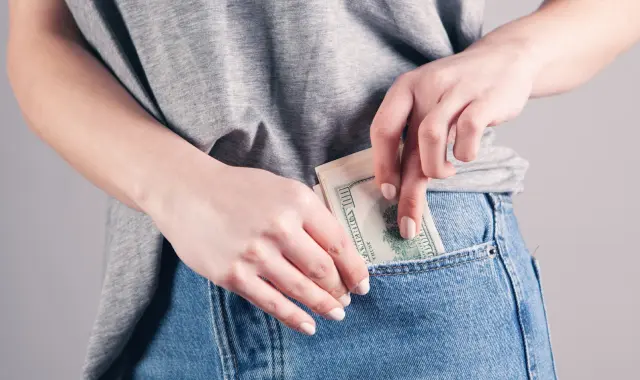There’s a piece of money advice I wish I had listened to years earlier and that is called pay yourself first. It’s not glamourous, it won’t make you rich overnight, and it sounds a little too simple to actually work.
The first time I heard it, I thought it was just another finance buzzword. I imagined people in suits, setting aside thousands a month, sipping overpriced coffee in minimalist apartments. Meanwhile, I was in my twenties, counting down the days to payday and crossing my fingers that my account wouldn’t dip into the red before it arrived.
But once I hit my thirties, my perspective shifted. I realised I’d spent years working hard and only to have nothing much to show for it besides bills, receipts, and a wardrobe full of “on sales” purchases I didn’t wear. Something had to change.
And this simple habit? It turned out to be the foundation for every financial win I’ve had since.
What Does “Pay Yourself First” Mean?
In plain language: you treat your savings like a non-negotiable bill.
It’s taking a portion of your income—even if it’s just 5% at first—and moving it into savings (or investments) before you pay rent, buy groceries, or spend on anything else.
Think of it as future-you sending a little thank-you to present-you every month. You are building a safety net, one deposit at a time, before life’s expenses swallow it all up.
Most of us do the opposite. We get paid, cover bills, buy the things we “need” (and the things we don’t), and then if there’s anything left, we save. Spoiler: there’s usually nothing left.
How I Accidentally Discovered the “Pay Yourself First’ Habit
My turning point came during a particularly stressful month. I’d paid my bills, stocked up the fridge, indulged in more takeout than I should have (calling it a “reward” to justify it), and by the end of the month, there was barely anything left in my account.
That same week, I came across a blog post where the writer mentioned paying herself first—even when she was broke. She said it forced her to adapt her spending to what was left, instead of constantly waiting for the “right time” to save.
It clicked. I was always waiting for the perfect moment—a raise, a bonus, a windfall. But if I couldn’t save from what I had now, would I really save when I had more? So I decided to try it.
How I’ve Been Practicing “Pay Yourself First” Habit—Even on a Tight Budget
The first month, I set up an automatic transfer of a small percentage my salary into a separate savings account the day after payday. I didn’t wait to see if I “could” afford it. I just treated it like rent – a bill that had to be paid.
Here’s what I learned:
- Automation is magic. When you don’t see the money, you don’t spend it.
- You adapt without realising. Suddenly, I was finding cheaper lunch spots and saying no to impulse buys because I knew my spending money was smaller.
- Small amounts add up faster than you think. After six months, I had a buffer for emergencies–something I’d never had before.
Why It Works So Well
- You remove temptation.
If you wait until the end of the month to save, life will find a way to spend your money for you. Paying yourself first means your savings are untouched and untouchable. - You build financial resilience.
A last-minute flight, a sudden medical bill–these things are stressful enough without the added panic of wondering how to pay for them. - You prove to yourself you can save.
Even if it’s $50 or $20 a month, the act of prioritising yourself sends a powerful message: your future matters.
“But I Can’t Afford to Save Right Now…”
I get it. When bills are high and income feels stretched, saving can feel like an impossible luxury. That’s where frugal living ties in.
When I started pairing paying myself first with frugal habits, it became so much easier.
Instead of thinking, I can’t save because I’m broke, I started asking, What can I cut back on so I can still save?
A few small changes that helped staying on the “pay yourself first” mindset:
- Making coffee at home during weekdays.
- Meal prepping so I wasn’t spending on last-minute takeout.
- Buying second-hand for clothes and home items.
- Cancelling subscriptions I wasn’t really using.
These changes didn’t just free up money–they made me more intentional with every purchase. And that freed-up money? Straight into savings, no guilt attached.
How to Start Paying Yourself First (Step-by-Step)
You don’t need to overhaul your whole financial life overnight. Here’s how to ease into it:
- Pick a percentage or amount. Start with something you won’t miss. For example 5% is a good beginner point.
- Set up a separate account. Preferably one without easy withdrawal access.
- Automate it. Have the transfer happen the day after payday.
- Adjust your spending. Let your budget adapt to the smaller amount.
- Increase over time. Each time your income grows, bump up the percentage.
How It Changed My Relationship With Money
Before, money felt like something that was constantly slipping through my fingers. Now, I have sense of control. I know that even if my month is chaotic, I’m still building toward something.
It’s not about becoming rich–thought it’s a great foundation for investing later, it’s about peace of mind. About knowing that you are taking care of yourself, even when life is unpredictable.
The Bottom Line
Paying yourself first isn’t about perfection. It’s about consistency.
It’s about flipping the script: instead of waiting to see if there’s “anything left” for you, you make sure you get paid before anyone else does.
Because if you don’t prioritise your future, who will?





Pingback: Frugal Living Tips: How to Save Money Without Sacrificing Joy